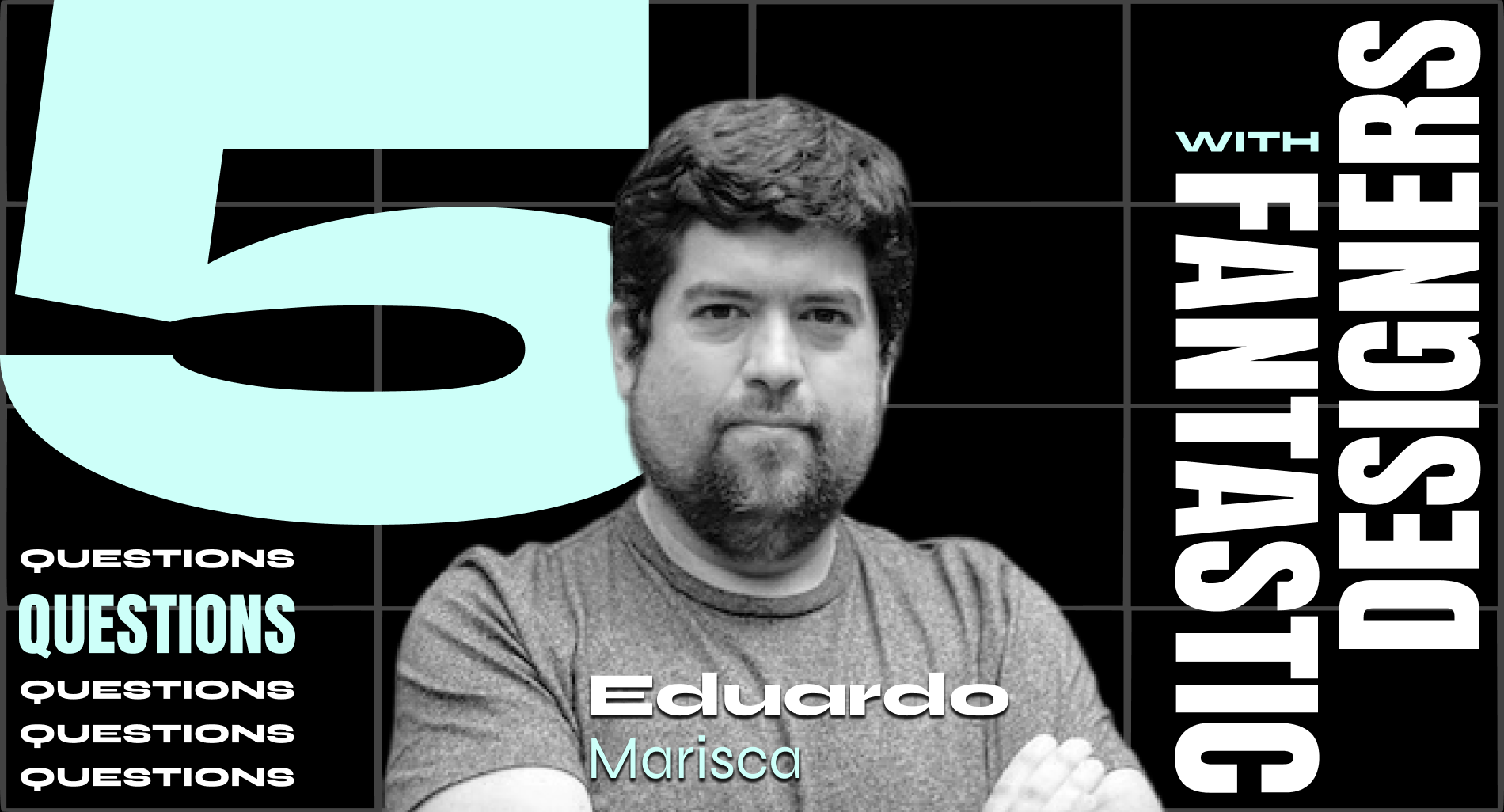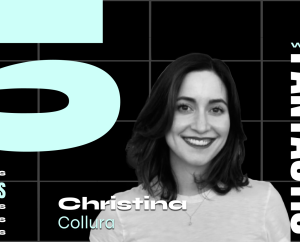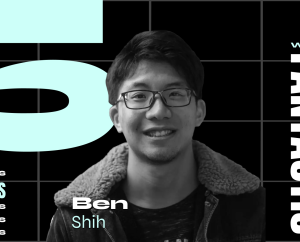Eduardo Marisca has spent over a decade working on design and innovation projects, leading transformation processes in multiple industries. He is the Editor-in-Chief for Mutaciones.la, a digital media outlet sharing innovation and transformation stories from across Latin America, and the Creative Director at Melmac, a boutique future design studio based in Lima, Peru. He shares his work and ideas throughout the region, exploring ways in which design and creativity can help build new possible futures for Latin America.
1. What design trends do you think will take off this year and more in the future?
I think it’s always hard to look beyond the things that are quickly becoming self-evident. For example, ¨synthetic design¨ – that is, design augmented by AI tools and techniques – or ¨design for sustainability¨, which are fast becoming commonplace buzzwords we’ll be seeing as part of most design practices over the next few months. Just as “digital ” was a few years back.
I’m hopeful we’ll see more radical versions of these self-evident trends that push us toward different forms of thinking. I’m a big fan of how we can use design fiction as a way to generate interesting conversations about possible futures, and push or challenge some of our assumptions. For example, thinking about regenerative design as design that actively works to reset and reconstruct our relationship with nature and our social fabric – over thinking about sustainable practices. Or reflecting on transhumanism and cybernetic organisms as metaphors to illustrate how we’re rapidly becoming entangled with artificial intelligence and ubiquitous computing.
Metaphors are really important and, from my point of view, it’s very generative when we think about design less as an industrial procedure, and more as an organic/biological process. Design becomes less about “producing” outputs and more about “seeding” or “nurturing” outcomes – which forces us as designers to acknowledge that we don’t really have that much control over the outputs of design, but rather operate more as facilitators or caretakers of an environment. These metaphors are fitting and helpful to think about my work at a moment that feels rather apocalyptic at times.
2. When it comes to making design and the design industry more diverse, equal, and inclusive, what changes are needed or would you like to see?
More people need to be able to access design. This means that design needs to become more accessible and we need to be wary of gatekeeping the world and the practice of design, we need to be careful not to become design purists. New people from different backgrounds and contexts will be able to better familiarize themselves with the language of design if there are online courses, books, YouTube videos, TikToks and just all sorts of entry points. It is important for people to discover design exists, there are many layers to the design practice, and they can apply its elements to problems they encounter daily, even if they’re not “professional” designers – whether that’s formal design training or formal employment in a design role.
We all benefit from the mainstreaming of design. And it’s natural for some of us on the inside to feel threatened by that, to feel an inclination to be dismissive and protective. But we have to ask ourselves – what are we being protective of, exactly? The world of design across Latin America is a relatively small community, but any person in that community would agree: Latin America can and will benefit from a broader design mindset and outlook to face our common challenges. This means that being part of the design community in an environment where design is poorly understood, will immediately turn us into evangelists, educators, coaches, and role models. We didn’t ask to be any of those things, but we are – just by virtue of being the only identifiable designer most people will have access to. That’s a lot of power, and with great power comes great responsibility.
So we need to guard ourselves against gatekeeping, and think about every one of us as a design educator and evangelist – we need a whole lot of design activism. Not because design is intrinsically better than any other field or method, but only because we know it can create significant value for people. And we shouldn’t be the only ones to hoard all of that value for ourselves.
3. What are 3 things you were not taught in school (if you were formally trained in design) that you wished you had been taught?
I was not formally trained as a designer. My background is in the humanities, the social sciences, and media studies, and my design miseducation was very hands-on.
But there are things I wish I’d known much sooner. For example, how important it is for designers to know how to facilitate good conversations. We’re often pushing ourselves to be the ones with the great idea that makes everyone’s jaw drop, when we should be thinking a lot more about how we could elevate others into that position. In my experience, sometimes all we need for an important change to happen is one good conversation with the right people, where everyone feels like they can open up and be honest about their fears and concerns, and suddenly we find the way to break through the stasis and move a project forward. Facilitating conversations is a skill and it needs to be trained and learned just as much as prototyping or user interviewing.
Storytelling is also something I wish I had embraced sooner. No project, no experiment can be considered a failure if you can weave a good story out of it that will help you in the future. We often confuse documentation or deliverables for storytelling – but storytelling is a design act in itself. It is the process of narrative design: you have to account for the needs and preferences of an audience for the purpose of conveying a message in a way that will be interesting to them, not to you. Storytelling is about making someone else’s experience better. And yet most projects and teams think about it as an afterthought at best, a nice to have. But design is storytelling, and storytelling is design.
Lastly, I had to make sure to pick up some basic financial education. Being able to have conversations about what a P&L is, and especially understanding the implications of being part of one P&L versus another, will make a world of a difference when trying to understand how clients and stakeholders make investment decisions. Think of it as an extension of user research.
4. What are the biggest challenges you’ve had to face as a designer? Did you overcome them? How?
One of the biggest challenges is breaking out of the frameworks and taking ownership over your own creative process. There are so many approaches and tools to do design, that it becomes easy to start thinking that some of them have to be “better” somehow. Then you find yourself agonizing over exactly what tool or framework you’re going to use, and suddenly design becomes a paint-by-numbers exercise rather than a creative pursuit you’re actually enjoying.
A lot of the problems I find in design nowadays are actually byproducts of the business models supporting design. For example, design consulting creates a set of incentives encouraging the creation of repeatable processes and starting every project from scratch – leaving little room for process adaptability or incremental learning. But that’s not a point of view on what makes better design – it is merely the result of the incentives defined by the underlying business model that can easily go unchallenged because it’s invisible to the design work.
In my experience it is much easier, and healthier, to exercise design when you have a meaningful understanding of the context within which the design process is happening. The organizational, cultural, and the market context – these all impose constraints on how you can operate and what you can deliver, and these constraints aren’t always transparent. A good way to overcome this for me has been to explore what design looks like in a variety of environments – within the world of consulting, within different sectors (private, public, social), with different expected outcomes, and so on. Taking ownership over your process means finding the experimental playgrounds where you can actually explore how design might look and work differently.
5. Why do you think design matters?
Design matters because we’ve broken reality. It’s not a stretch to think or say the world is a pretty weird place right now. But we know it can be made better, and I think design is fundamentally about being able to project intent onto the human-made environment we live in.
Design is and should be intrinsically critical of the world, in the best of ways: we see the world as it is, we imagine the world as it could be, and we try to bridge the gap. But more often than not, the practice of design takes place in environments where you have to create systems that have harmful or questionable impacts on the lives of the people we’re trying to benefit. Design has been weaponized at the service of selling more, scrolling more, clicking more, using more.
Design has been weaponized and I think we need to reclaim it. It doesn’t mean you can’t leverage design to sell, scroll, click, or use – but it does mean we have to take accountability for these things we’re putting out into the world and the effects they’re having on people, on communities, on nature.
Design matters because it is fundamentally optimistic – sometimes to a fault. But design starts from the assumption that solutions are possible, even if they’re imperfect and need to be refined over time. That’s fine! But we can try something and see how it works. With the world being how it is right now, and facing larger, more complex problems than anything we’ve probably faced in the past, here you have a bunch of people with strong points of view on what kind of pen or marker they like to doodle with, staring right into the abyss and going: “you know, I think I might have an idea about something we can try”. And I think that’s beautiful.
* * *
Eduardo will give a talk at the digital design conference Design Matters Mexico 24, which will take place in Mexico City & Online, on Jan 31-Feb 1, 2024. Get your ticket here! And if you want to connect with Eduardo, find him on Instagram, LinkedIn, Twitter, or visit his website.










